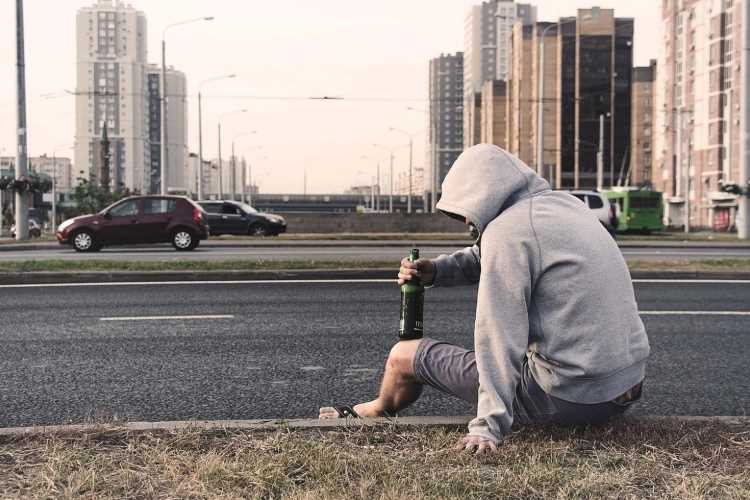
By Shraddha Srivastava and Barun Kumar Thakur
Is there any direct link between economic development in a society and prevailing suicide rate? Niti Aayog’s recently released SDG index report for the year 2020-21 takes stock of the country’s performance on 17 sustainable development goals set by the United Nations. Indian states are classified on the basis of how they fared in each these goals. SDG 3 addresses issues such as good health, maternal and infant mortality, HIV and other infectious diseases, as well as non-communicable diseases. One fundamental issue that calls for renewed focus here is mental health. This study attempts to understand the link between the suicide rates and the level of economic development in Indian states.
According to the NITI Aayog SDG index report 2021, Bihar has the highest headcount ratio of poverty at 52.5% among all states. The prevalence of stunting rates is the highest in Bihar at 42%. The state has the lowest gross enrolment ratio at 26.39%, and the lowest enrolment ratio in higher education at 13.6%. Female labour force participation is most lacking in Bihar at 0.06%, the lowest number of mobile connections at 51%, and the lowest internet subscription rate at 31%. Growth wise indicates that people in the lowest two wealth quintiles are 75% in Bihar and 3.2% in Kerala. Kerala has the lowest headcount ratio of poverty at 1.1%.
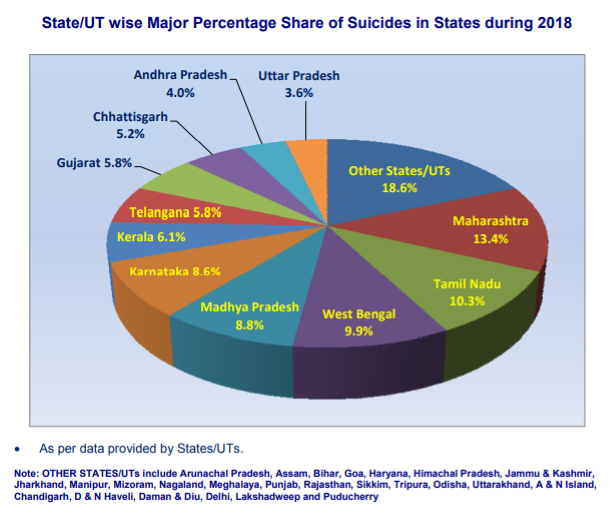
Suicide rate high in Kerala, low in Bihar
From the above details, it is evident that Bihar is the worst performer among all states on almost every indicator. According to the SDG index report of the Niti Aayog, Bihar also has the lowest suicide rate of 0.5 per 1,00,000 population. In contrast, developed states such as Sikkim and Kerala have the highest suicide rates at 33.1 and 24, respectively. A report by the Indian Council for Medical Research and the Ministry of Health and Family Welfare highlights rate of death from suicide is about three times higher in all southern states compared with the poorer states of north. A significantly higher number of people deal with different levels of issues in southern states due to social, economic, and cultural reasons.
Happiness and growth are not correlated. The UN report on Happiness Index showed that around 43 countries exhibit a negative corelation between Happiness and GDP per capita. Similarly, most of the developed states in India with high growth indicators also have high suicide rates. The higher the income, suicide rates also are higher. Various factors are responsible for the situation where people end their lives for non-economic reasons.
READ I Retirement planning: Indians, Americans stare at uncertain future
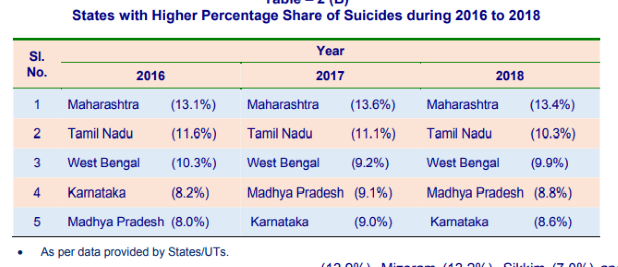
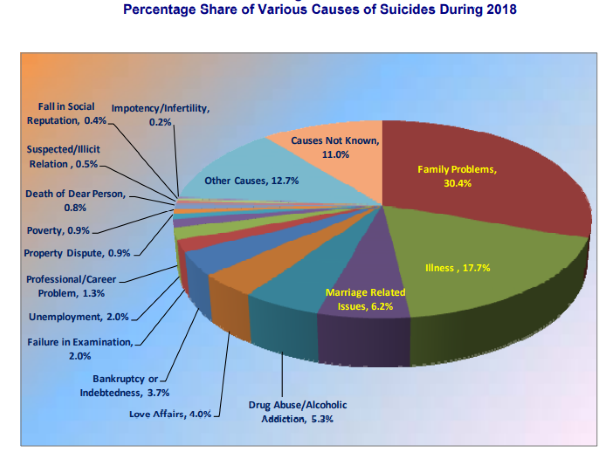
Corelation between development and suicide rates
According to a study by National Crime Records Bureau, family problems and illness are the major causes of suicides, accounting for 30.4% and 17.7% of total such deaths in 2018. Marriage-related issues (6.2%), drug abuse/ addiction (5.3%), love affairs (4.0%), bankruptcy or indebtedness (3.7%), failure in examination and unemployment (2.0% each) are the other major causes of deaths by suicide.
More than half of suicide victims were house wives, accounting for 54% of the total women victims and 17% of total victims in 2018. Government employees constituted 1.3% of the total suicide victims while private sector employees made up 6.1% of total. Students and unemployed accounted for 7.6% and 9.6% of the total suicides that year, according to NCRB data. More than 66% of the suicide victims had annual incomes less than Rs 1 lakh, while 29% had annual incomes higher than Rs 1 lakh and lower than Rs 5 lakh.
READ I MSME 2.0: A policy prescription for inclusive economic growth
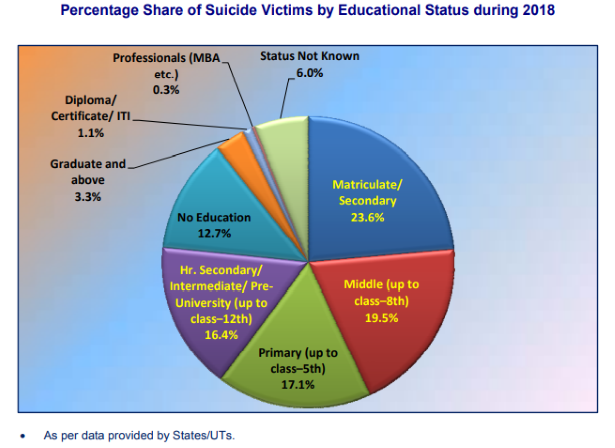
Consumerism and the influence of social media are attributed to high suicide rates in richer states. High aspirations and low social interaction are affecting people emotionally and mentally. The SDG index report shows that most developed states have higher mobile and internet penetration. The same states have higher suicide rates. The role of technology and social media may have an influence on suicide victims.
Another reason for low suicide rates in poorer states such as Bihar is low level of indebtedness due to an under developed banking system that does not allow farmers do take loans. Large families are dependent on agriculture income. They have large families and strong bonding with family members. In the destructive phase, the family members are there to support distressed people. People from Bihar usually spend their childhood in a challenging situation due to a lack of proper facilities and resources. They adjust quickly to different kinds of problems. They wish to earn enough for their survival without expecting means beyond that is needed to meet basic requirements.
The issue is the impact of economic development on the mental health of citizens. There is an urgent need for the government to address mental health issues. A smart intervention by the government may create a productive economic environment that will bring down the suicide rates.
(Dr Shraddha Srivastava is a consultant at the Institute for Pioneering Insightful Research and Edutech Pvt Ltd. Dr Barun Kumar Thakur is Assistant Professor at department of economics at FLAME University, Pune. The views expressed are personal.)
